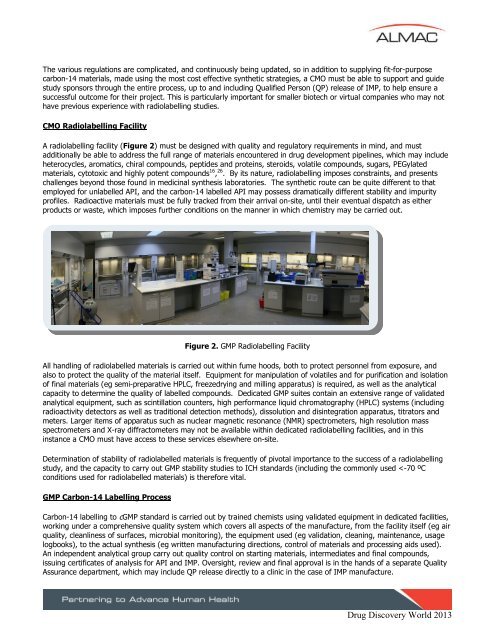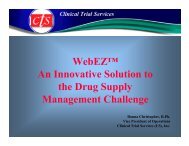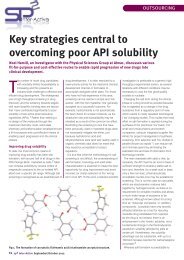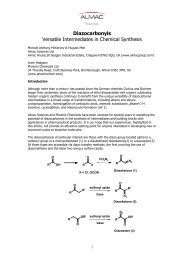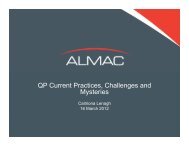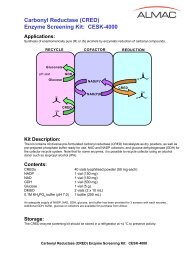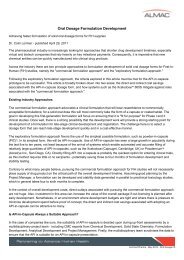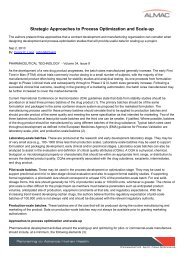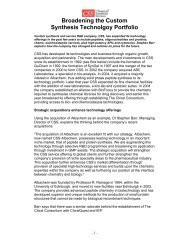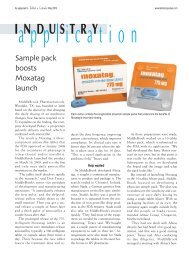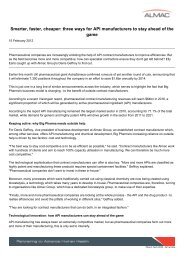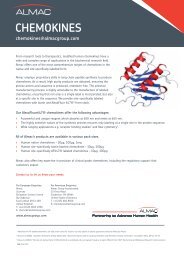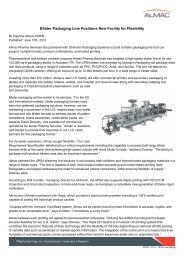CARBON-14 LABELLED API MANUFACTURING - Almac
CARBON-14 LABELLED API MANUFACTURING - Almac
CARBON-14 LABELLED API MANUFACTURING - Almac
You also want an ePaper? Increase the reach of your titles
YUMPU automatically turns print PDFs into web optimized ePapers that Google loves.
The various regulations are complicated, and continuously being updated, so in addition to supplying fit-for-purpose<br />
carbon-<strong>14</strong> materials, made using the most cost effective synthetic strategies, a CMO must be able to support and guide<br />
study sponsors through the entire process, up to and including Qualified Person (QP) release of IMP, to help ensure a<br />
successful outcome for their project. This is particularly important for smaller biotech or virtual companies who may not<br />
have previous experience with radiolabelling studies.<br />
CMO Radiolabelling Facility<br />
A radiolabelling facility (Figure 2) must be designed with quality and regulatory requirements in mind, and must<br />
additionally be able to address the full range of materials encountered in drug development pipelines, which may include<br />
heterocycles, aromatics, chiral compounds, peptides and proteins, steroids, volatile compounds, sugars, PEGylated<br />
materials, cytotoxic and highly potent compounds 16 , 26 . By its nature, radiolabelling imposes constraints, and presents<br />
challenges beyond those found in medicinal synthesis laboratories. The synthetic route can be quite different to that<br />
employed for unlabelled <strong>API</strong>, and the carbon-<strong>14</strong> labelled <strong>API</strong> may possess dramatically different stability and impurity<br />
profiles. Radioactive materials must be fully tracked from their arrival on-site, until their eventual dispatch as either<br />
products or waste, which imposes further conditions on the manner in which chemistry may be carried out.<br />
Figure 2. GMP Radiolabelling Facility<br />
All handling of radiolabelled materials is carried out within fume hoods, both to protect personnel from exposure, and<br />
also to protect the quality of the material itself. Equipment for manipulation of volatiles and for purification and isolation<br />
of final materials (eg semi-preparative HPLC, freezedrying and milling apparatus) is required, as well as the analytical<br />
capacity to determine the quality of labelled compounds. Dedicated GMP suites contain an extensive range of validated<br />
analytical equipment, such as scintillation counters, high performance liquid chromatography (HPLC) systems (including<br />
radioactivity detectors as well as traditional detection methods), dissolution and disintegration apparatus, titrators and<br />
meters. Larger items of apparatus such as nuclear magnetic resonance (NMR) spectrometers, high resolution mass<br />
spectrometers and X-ray diffractometers may not be available within dedicated radiolabelling facilities, and in this<br />
instance a CMO must have access to these services elsewhere on-site.<br />
Determination of stability of radiolabelled materials is frequently of pivotal importance to the success of a radiolabelling<br />
study, and the capacity to carry out GMP stability studies to ICH standards (including the commonly used


